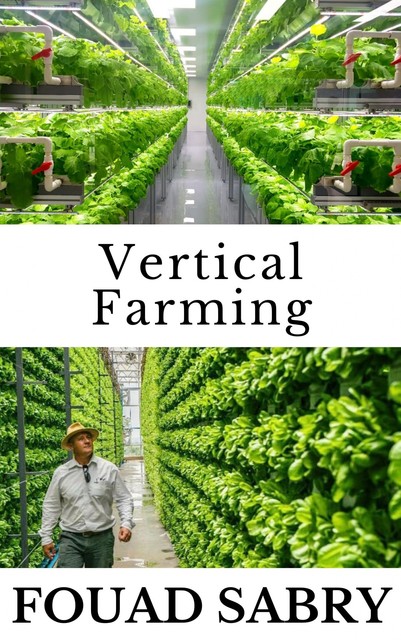We use cookies to improve the Bookmate website experience and our recommendations.
To learn more, please read our Cookie Policy.
To learn more, please read our Cookie Policy.
Accept All Cookies
Cookie Settings
Something went wrong. Try again.
What Is Vertical Farming
By 2050, it’s estimated that there will be two billion more human beings than there are today. To feed that many people, we’ll need a landmass the size of South America to account for the food production. Unfortunately for everyone, they don’t make new continents anymore, and if the lack of land isn’t enough to worry about, year by year, the planet is losing arable land due to the changing climate, intensifying weather conditions, air quality, and more.
Vertical farming is the practice of growing crops in vertically stacked layers. It often incorporates controlled-environment agriculture, which aims to optimize plant growth, and soilless farming techniques such as hydroponics, aquaponics, and aero ponics. Some common choices of structures to house vertical farming systems include buildings, shipping containers, tunnels, and abandoned mine shafts.
The main advantage of utilizing vertical farming technologies is the increased crop yield that comes with a smaller unit area of land requirement. The increased ability to cultivate a larger variety of crops at once because crops do not share the same plots of land while growing is another sought-after advantage. Additionally, crops are resistant to weather disruptions because of their placement indoors, meaning fewer crops lost to extreme or unexpected weather occurrences. Because of its limited land usage, vertical farming is less disruptive to the native plants and animals, leading to further conservation of the local flora and fauna.
How You Will Benefit
(I) Insights, and validations about the following topics:
Chapter 1: Vertical Farming
Chapter 2: Arcology
Chapter 3: Development Supported Agriculture
Chapter 4: Folkewall
Chapter 5: Foodscaping
Chapter 6: Green Wall
Chapter 7: Container Garden
Chapter 8: Terrace (Earthworks)
Chapter 9: Terrace (Garden)
Chapter 10: Terrace (Building)
Chapter 11: Urban Horticulture
(II) Answering the public top questions about vertical farming.
(III) Real world examples for the usage of vertical farming in many fields.
(IV) 17 appendices to explain, briefly, 266 emerging technology in each industry to have 360-degree full understanding of vertical farming' technologies.
Who This Book Is For
Professionals, undergraduate and graduate students, enthusiasts, hobbyists, and those who want to go beyond basic knowledge or information for any kind of vertical farming.
By 2050, it’s estimated that there will be two billion more human beings than there are today. To feed that many people, we’ll need a landmass the size of South America to account for the food production. Unfortunately for everyone, they don’t make new continents anymore, and if the lack of land isn’t enough to worry about, year by year, the planet is losing arable land due to the changing climate, intensifying weather conditions, air quality, and more.
Vertical farming is the practice of growing crops in vertically stacked layers. It often incorporates controlled-environment agriculture, which aims to optimize plant growth, and soilless farming techniques such as hydroponics, aquaponics, and aero ponics. Some common choices of structures to house vertical farming systems include buildings, shipping containers, tunnels, and abandoned mine shafts.
The main advantage of utilizing vertical farming technologies is the increased crop yield that comes with a smaller unit area of land requirement. The increased ability to cultivate a larger variety of crops at once because crops do not share the same plots of land while growing is another sought-after advantage. Additionally, crops are resistant to weather disruptions because of their placement indoors, meaning fewer crops lost to extreme or unexpected weather occurrences. Because of its limited land usage, vertical farming is less disruptive to the native plants and animals, leading to further conservation of the local flora and fauna.
How You Will Benefit
(I) Insights, and validations about the following topics:
Chapter 1: Vertical Farming
Chapter 2: Arcology
Chapter 3: Development Supported Agriculture
Chapter 4: Folkewall
Chapter 5: Foodscaping
Chapter 6: Green Wall
Chapter 7: Container Garden
Chapter 8: Terrace (Earthworks)
Chapter 9: Terrace (Garden)
Chapter 10: Terrace (Building)
Chapter 11: Urban Horticulture
(II) Answering the public top questions about vertical farming.
(III) Real world examples for the usage of vertical farming in many fields.
(IV) 17 appendices to explain, briefly, 266 emerging technology in each industry to have 360-degree full understanding of vertical farming' technologies.
Who This Book Is For
Professionals, undergraduate and graduate students, enthusiasts, hobbyists, and those who want to go beyond basic knowledge or information for any kind of vertical farming.
more
223 printed pages
- Original publication
- 2021
- Publication year
- 2021
- Publisher
- One Billion Knowledgeable
Have you already read it? How did you like it?
👍👎
fb2epub
Drag & drop your files
(not more than 5 at once)


